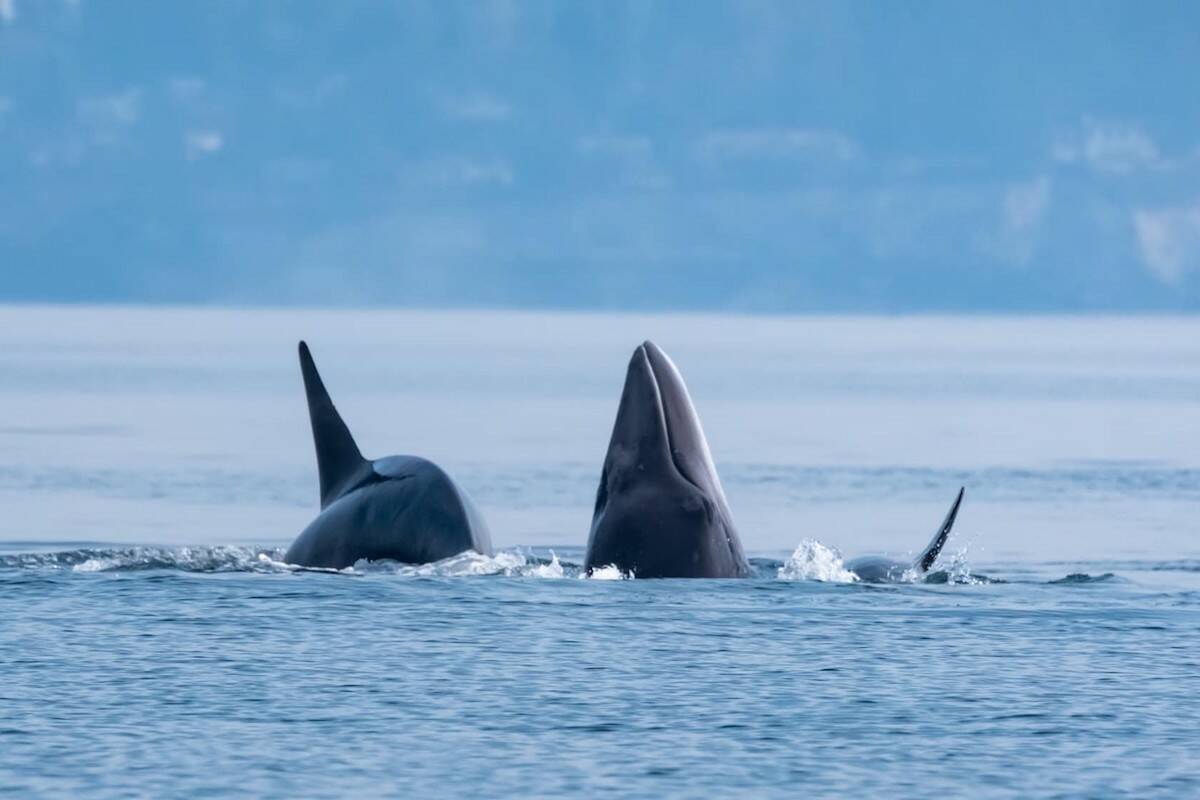Two groups of Bigg’s killer whales worked together to take down an adult minke whale on Friday afternoon (Oct. 7).
The Pacific Whale Watch Association said two groups of transient orcas worked in tandem to prey on the nine-metre-long minke whale. The interaction occurred south of Washington State’s Smith Island, approximately 35 kilometres from Greater Victoria’s shores.
At this time, it’s believed the 10-ton minke was a known member of the seasonal Salish Sea population that was first documented in the region in 1982. The nine killer whales completed the hunt in about 30 minutes.
“It’s thought that minkes only live to be about 50 years old, so despite a dramatic end, this whale lived a full life,” the association said in a social media post.
Predation events can elicit mixed emotions, the association said, especially when the whale is well known to Salish Sea observers.
“One thing is certain – there’s absolutely no denying that Bigg’s killer whales are the ocean’s apex predator.”
Minke whales belong to the baleen family, like humpback and grey whale species. In the absence of teeth, they have hundreds of long, stiff strips in their mouths that act like giant strainers. Minke whales are also the smallest member of the rorquals sub-group.
The National Oceanic and Atmospheric Administration said minke whales are one of the most abundant rorquals in the world and their population status is considered stable throughout almost their entire range, especially when compared to other large whales. While minke whales in Alaskan waters are migratory, ones found in the inland waters of California, Oregon and Washington are considered residents.
The species is not threatened or endangered but is protected under U.S. law.
READ: Southern resident killer whale population falls to 73: U.S. researchers
Do you have a story tip? Email: vnc.editorial@blackpress.ca.
Follow us on Twitter and Instagram, and like us on Facebook.

